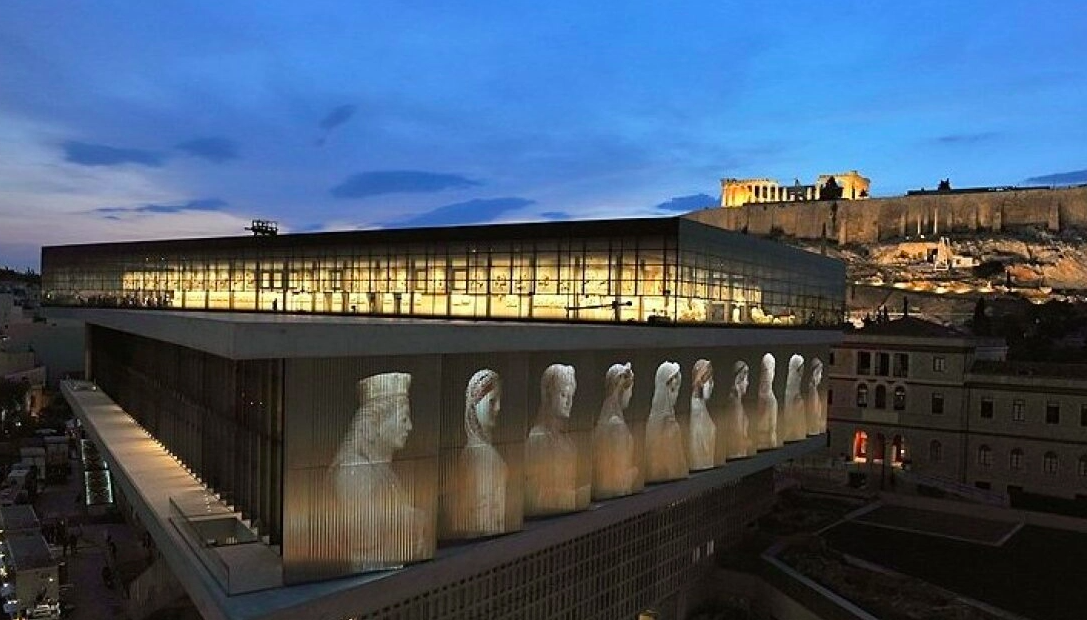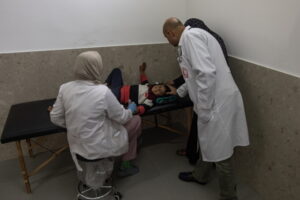An ancient civilization, unknown to many, is revealed in the new temporary exhibition titled “Treasures of Ancient Basilicata – The Invisible Heritage,” which will take place in the temporary exhibition hall of the Acropolis Museum from October 17, 2024, to January 31, 2025.
“This is the result of collaboration among many scholars who have been working for years to highlight the culture of an area in the southern tip of Italy, at the center of the Gulf of Taranto, in the land of Oenotria, today’s Basilicata. Through this exhibition, visitors will get to know the culture encountered by the Greeks from the Peloponnese and the ancient Greek islands during their great journeys to settle in the lands of Italy and Sicily, mainly in the part later known as Magna Graecia,” says Professor Nikolaos Stampolidis, General Director of the Acropolis Museum.
The exhibition, curated by the General Director of Italy’s state museums Massimo Osanna and the Director of the National Museums of Matera, Anna Maria Mauro, focuses on the specific area of Basilicata, highlighting the region’s culture from the end of the Bronze Age (11th century BC) to the 6th century BC. It includes 312 objects selected from museums in the region.
“Materials mainly from the burials of women and men will be presented—poetically speaking, ‘from ghosts and specters, kisses and lips consumed, with the curtains of time wide open.’ These are personal items offered to the deceased by their relatives and friends for their great journey to Hades, accompanying objects that reveal their beliefs, customs, and relationships when they were alive—works reflecting the early culture of Basilicata. Additionally, objects later brought by the Greeks, which mingled and merged with the previous ones, will also be showcased,” the professor notes.
Among the latter is a 7th-century BC mixing vessel (dinos) depicting Bellerophon killing the Chimera and an amber necklace with a pendant in the shape of a head with Daedalic coiffure, items that testify to the contacts between the local population and Greek culture. “We see this penetration already from the late Geometric period. Essentially, what we are doing is not just bringing beautiful objects, but the entire burial assemblage so that we can discern the characteristics of the culture that the Greeks encountered, who came either from the Peloponnese or the Ionian and Aegean islands,” emphasizes the General Director of the Acropolis Museum.
The exhibits reveal the choice of burial customs. “That is, cremation and incineration, as seen in the vast necropolis near the city of Matera, in the Timari hill area, or burial both inland and along the coasts of the region. Some of the most famous grave goods of the dead are the early metal artifacts, not only weapons but especially the bronze clothing and jewelry of women. This ritual display of wealth during burial ceremonies reflected the status not only of the deceased themselves but also the power and wealth of their ‘houses,’ at a time when these items were essentially withdrawn from use forever. The women’s jewelry, mainly bronze, compares to similar items from northern Greece and Macedonia, from Aigai (Vergina), and hints at population movements, not only of groups but also of kinship relations such as marriage or other trade exchanges,” explains N. Stampolidis.
The exhibition is structured into two sections. The first covers the Iron Age, from the 11th to the 8th century BC, and the second focuses on the Early Archaic and Archaic Periods. “The presence of ceramics from the 8th, 7th, and 6th centuries BC is noteworthy. From this phase, groups of objects from various regions of Basilicata stand out, such as from Chiaromonte, an area where different sets of people seem to ‘meet,’ the four nations mentioned by Strabo and the settlements-cities that developed in the wider area. Even from the Alianello area, as well as later from Metapontum, the burial findings point to more complex interpretations. Not only ceramic finds of imported pottery or their imitations from Corinth, the Cyclades (Paros, Naxos), the Eastern Aegean (Rhodes), and the coasts of Asia Minor, e.g., from Miletus, but also metal jewelry, such as Phrygian fibulae, and furniture of mixed techniques. The use of precious metals, such as bronze, silver, or gold, as well as other valuable materials, such as amber and ivory, refer to techniques known from Homer. Similarly, the presence of ceramics related to the preparation and drinking of wine or even grave goods referring to women’s activities such as weaving, also relate to similar Homeric descriptions,” notes the professor.
There are multiple interpretations for other objects as well. “Complex technical luxury ceramic and metal objects from Incoronata and Metapontum seem to lead to established relations not only with Greek and Eastern imports, similar to those encountered in the Eastern Mediterranean and Crete, but also with Etruria, which have been interpreted as aristocratic lineage exchanges not excluding trade transactions. However, the fact that these objects are not finds from religious (e.g., sanctuaries) or public spaces but are samples of a display of opulence suggests customs common in Greek areas and regions corresponding to Greek settlements on the Italian peninsula,” says N. Stampolidis.
And he concludes, “The wealth of the exhibition’s objects indicates its importance, as it will occupy the entire space of the temporary exhibition hall of the Acropolis Museum. This is yet another proof of the creative relationships between the Acropolis Museum and the museums of Italy.”
Ask me anything
Explore related questions





